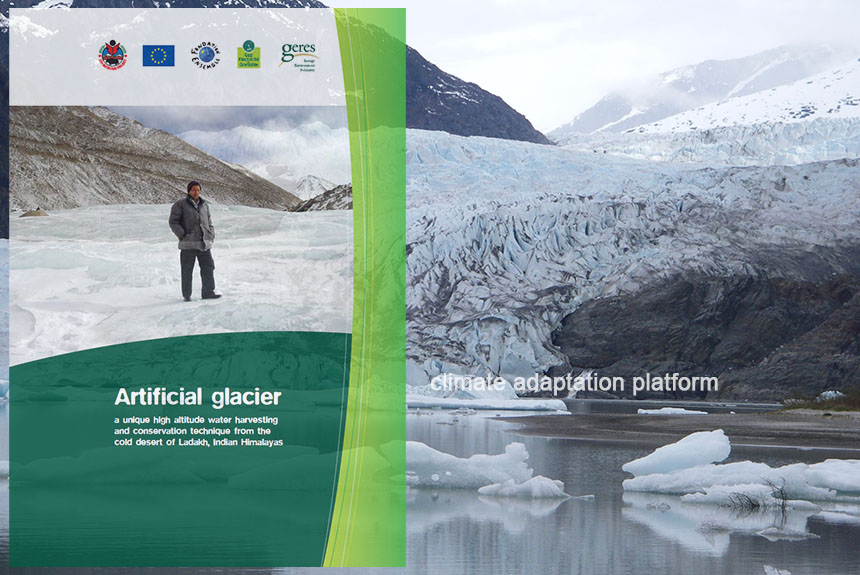Kyrgyzstan is a landlocked and high-altitude country in Central Asia. Agriculture is the primary source of income and food for residents.
However, the country suffers from water scarcity. The dry climate and lack of arable land also make it challenging to grow food. The region struggles with low rainfall. Winters bring almost zero snow, while scorching temperatures in the summer offer very little rain.
According to the UN’s Food and Agriculture Organisation (FAO), the country has been acutely experiencing the effects of climate change. Villagers in Kara-Dobo applied ingenuity to cope with droughts by creating an artificial glacier. Many took this idea laughable at first but gained the full support of Kara-Dobo villagers.
Funded by the United Nations Peacebuilding Fund, the project is implemented jointly by FAO and the United Nations Population Fund (UNFPA) and is aimed at enhancing cross-border environmental and socio-economic cooperation between Uzbekistan and Kyrgyzstan; it also works to build confidence and trust between local governments, communities and civil society organisations. The project uses сlimate-smart agricultural practices to preserve and sustain common natural resources.
How the villagers built their artificial glacier and how this project has been an effective climate adaptation strategy for the villagers by providing them with a glacier in winter and flowing water in summer for people and animals to drink and irrigate their farms is explained in the article below:
Artificial glacier helps mountain village in Kyrgyzstan meet water needs
Research published in Nature in December 2019 states that at least 1.9 billion people globally – roughly a quarter of the world’s population – rely on mountains as their water source. Mountains are considered water towers.
Through their watershed function, they supply more than half of humanity with water for drinking, irrigation, industry, food and energy production for mountain villages and the millions living downstream.
However, these water towers are vulnerable to climate change impacts. The degradation of mountain ecosystem services has severe consequences for the livelihoods and environments of downstream regions.
A 2022 report from the World Meteorological Organization says that Asia has warmed the continent with an enormous land mass extending to the Arctic and is warming faster than the global average.
The warming trend in Asia in 1991–2022 was almost double the warming trend in the 1961–1990 period, according to the State of the Climate in Asia 2022 report.
Over the past 40 years, most glaciers in the High Mountain Asia region experienced mass loss, with an accelerating trend in the 21st century, which will significantly impact future food and water security.
How artificial glaciers are made
Ladakh, a region far north of India, has a similar climate to Kyrgyzstan; rainfall is scarce, and water critical for irrigation farmlands comes from melting snow and ice.
Climate change makes the region even drier, leaving farmers without water in the crucial planting months of April and May. Their solution is to make glaciers.
The report, Artificial Glacier, explains how artificial glaciers are made. The report also notes the technology used to make artificial glaciers is replicable in similar geo-climatic regions such as Spiti (in Himachal Pradesh) and some Asian countries like Kazakhstan, Kyrgyzstan, China (Tibet), Nepal, etc.
Source:
Artificial glacier helps mountain village in Kyrgyzstan meet water needs. (2023, August 21). Food and Agricultural Organization of the United Nations. Retrieved from https://www.fao.org/fao-stories/article/en/c/1648898/
State of the Climate in Asia 2022. World Meteorological Organization. Retrieved from https://public.wmo.int/en/our-mandate/climate/wmo-statement-state-of-global-climate/Asia-2022
Artificial glacier. Retrieved from https://www.geres.eu/wp-content/uploads/2019/10/artificial-glacier-leaflet.pdf
Immerzeel, W. W., Lutz, A. F., Andrade, M., Bahl, A., Biemans, H., Bolch, T., … & Baillie, J. E. M. (2020). Importance and vulnerability of the world’s water towers. Nature, 577(7790), 364-369.



Leave a Reply